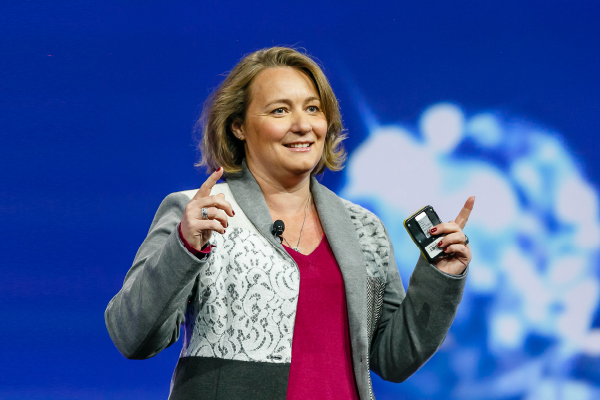Leanne Kemp, CEO, Everledger – a permanent ledger for diamond certification and transaction history – discussed the evolution behind blockchain technology and how it is impacting various verticals across the region.

Can you summarise Everledger’s main operations?
At Everledger, we use the very best emerging technology; blockchain, smart contracts and machine vision, to be able to assist banks and insurance companies in the reduction of risk and fraud. We identify diamonds by creating a digital thumbprint of them using 40 meta data points of the stone. In addition, we take the inscription – which is laser inscribed on the girdle or the crown – and the faults, called inclusions, and map all of this information onto the blockchain, creating an identifier of that diamond. We can now see if it is being sold on open-market places and work with insurance companies on fraudulent claims. There is no line of sight for insurers to see the data that they need to identify these fraudulent claims, so that’s where we serve our purpose in the market.
What are the key trends in blockchain that we should be aware of?
Blockchain is one of the most transformative technologies of our time, as it is taking a transactional trust layer to the Internet for transactional trade. If you look at the technology in each of its components, it’s actually not new technology at all. Cryptographic signatures have been around since the second World War, and the idea of distributed data in a database format has also been around for a very long time. But actually bringing these technologies together was such a novel concept that it gave birth to an entirely new way of transacting with trust.
Aside from the diamond industry and finance, where else can we expect to see the impact of blockchain?
We’re seeing IoT-enabled ‘things’ connecting to the blockchain. One example of this being useful is in flight insurance, especially in Europe. EU law states that you must be paid compensation if your flight is delayed by more than two hours. If you have the ability with the blockchain to prove that the delay occurred at a specific time, it enables the smart contracts to kick in and actually write out the claim requirement form, and smart contracts at the insurer’s end can pay the claim. This money can then be delivered to the customer’s mobile as soon as the delay passes the two-hour threshold.
Dubai is aiming to shift all transactions to blockchain by 2020 and become paperless. Do you see this as a reasonable expectation?
There is an essence of this technology having the promise to deliver technical ubiquity. We get to the point where we are so digitally enabled, that it becomes invisible to us. Largely, most disruptive technologies are that. It’s really great that we have the UAE government supporting the paperless initiative, and that they’re doing it with such a robust formation of data and privacy around that data. If there was to be one country in the world that could lead the charge, there’s no doubt about it that the UAE is the one that can do this.
Why did you choose IBM’s blockchain technology over that of other vendors for Everledger’s offering?
When you have such a transformative technology such as the blockchain, an open-source initiative is a must-have. You have to be able to have a community of awareness that actually grows the technology. IBM has shown an absolute lead in that regard in its initiative around the open-source community.
You’ve described yourself as a ‘super-nerd,’ why is that?
I’ve always been curious about solving problems that couldn’t be solved before today. We created the wheel which enabled us to be mobile, then we developed steam which allowed us to go quicker whilst being mobile. There’s something about that evolution and the ability to develop all the things that I dream of. Besides, I’ve tried Sudoku and I just can’t get my head around it – so technology is the one for me.
What are the company’s plans for the Middle East region for 2017?
Our role in 2017 is to make good on the promise initiated by the Kimberly Process, that only 0.01 percent of diamonds traded are from conflict zones. We’re prepared to deliver on the illusions of the technology, and that’s what we will be doing here. There is no doubt about it that the UAE should be on our operational roadmap for 2017, and that we should have a Dubai office with resources to support the diamond trade that exists here. Dubai is the second largest hub of diamonds behind India, so why not?





